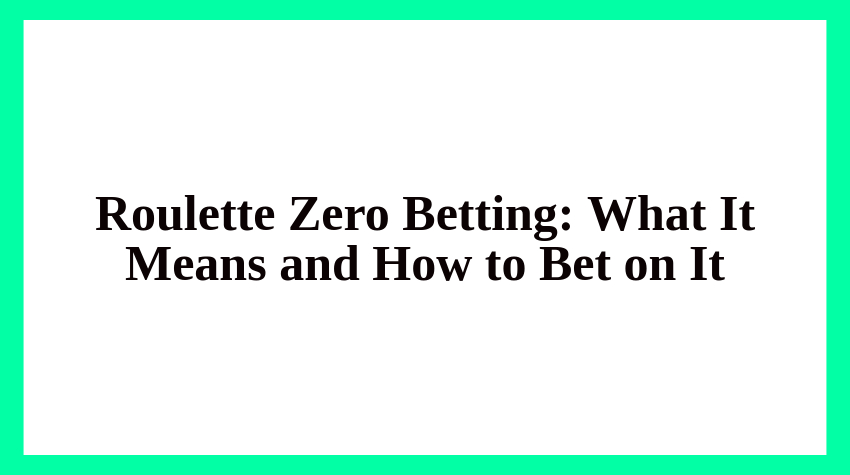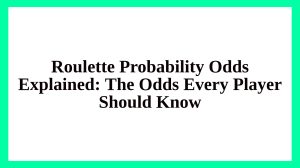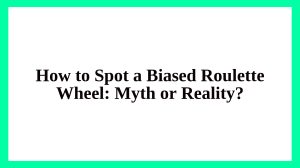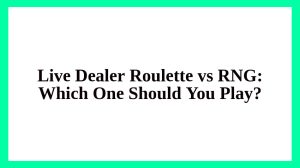Roulette is a game of numbers, chance, and strategy. But among all the colorful sections on the wheel, the green zero pocket often sparks confusion and intrigue. For many beginners, zero might seem like just another number. However, it plays a unique role that can influence betting strategies, odds, and even the house edge. In this guide, we explore everything you need to know about roulette zero betting, including what it means, how it works, and how to use it to your advantage.
Understanding the Zero in Roulette
What Is the Zero Pocket?
The zero pocket on a roulette wheel is more than just an extra number—it plays a pivotal role in the game’s balance between luck and house advantage.
- Color and Design: Unlike the standard red and black numbered pockets (1–36), the zero is green, making it instantly recognizable. This visual distinction separates it from typical betting categories like red/black, even/odd, or high/low.
- European vs. American Wheels:
- European Roulette: Features only one zero (0), resulting in 37 total numbers (1–36 + 0).
- American Roulette: Includes both a single zero (0) and a double zero (00), bringing the total to 38 numbers.
The inclusion of the zero—especially the double zero in American roulette—is not just a cosmetic choice. It alters the mathematical structure of the game in favor of the casino, which leads us to why zero truly matters.
Why Does Zero Matter?
The green zero pocket is the key reason roulette has a house edge. While it might appear to be just another number, it acts as the casino’s secret weapon.
- Outside Bets Are Affected: In roulette, many players place outside bets on broader categories like:
- Red or Black
- Even or Odd
- High (19–36) or Low (1–18)
- These bets cover 18 out of the 37 (or 38) numbers—almost half. However, when the ball lands on zero, it doesn’t fall under any of these categories, meaning all outside bets lose. This catch-all nature of the green zero ensures the house consistently retains a statistical edge.
- House Edge Explained:
- In European Roulette, the house edge is 2.7% due to a single zero.
- In American Roulette, the edge jumps to 5.26% because of the extra double zero.
- Strategic Impact: Even if you’re using a strategy that covers many outcomes—like the Martingale system or column bets—zero remains the unpredictable element that can break your momentum. It’s the wildcard that even seasoned players respect.
In short, while the zero pocket may seem minor at first glance, it’s the reason roulette is not a 50/50 game. Recognizing its impact is essential for understanding odds, refining your betting strategy, and becoming a more informed player.
Betting on Zero in Roulette
Can You Bet on Zero Directly?
Yes—you absolutely can bet on zero directly in roulette, and many players do!
In fact, zero is treated just like any other number on the table when it comes to straight-up bets. This means you can place a single chip directly on the green 0, and if the ball lands there, your payout will be 35 to 1. That means a modest 10-dollar bet on zero would return 360 dollars (including your original stake).
While it’s a high-risk, high-reward move, betting on zero can be a smart tactic if you’re playing European Roulette (with only one green zero) and feel like breaking from the usual outside bets like red/black or even/odd.
Why Bet on Zero?
- Low probability, high payout: It’s a long shot, but the reward is big.
- Surprise factor: Many casual players ignore the zero, so it can feel satisfying to hit what others aren’t expecting.
- Break up a pattern: If you’re playing with strategy and notice the ball has avoided the zero pocket for many spins, some players like to “test their luck” on it.
How Else Can You Bet on Zero?
Roulette is flexible—and that includes multiple betting options involving zero, especially for players who want to cover more ground without risking everything on a single number. Let’s break down the combination bets you can use:
🔸 1. Split Bets (Pays 17 to 1)
You can split your bet between zero and a neighboring number, placing your chip on the line between the two:
- 0 and 1
- 0 and 2
- 0 and 3
These bets give you two chances to win with a better payout than outside bets but less than a straight-up.
🔸 2. Street Bets (Pays 11 to 1)
A street bet covers three numbers in a horizontal line. The most common involving zero are:
- 0–1–2
- 0–2–3
Place your chip at the edge where the three numbers meet the outside of the layout.
🔸 3. Corner Bet (Pays 8 to 1)
This bet covers four numbers that form a square on the table:
- 0–1–2–3
Place the chip right in the center where all four numbers touch. It’s a popular way to hedge your bets around the zero pocket while increasing your chances slightly.
🔸 4. Basket Bet (Top Line Bet) – American Roulette Only (Pays 6 to 1)
This unique bet exists only in American roulette, which includes both a 0 and 00. The basket bet covers:
- 0–00–1–2–3
It’s the only five-number bet on the table, and while the payout is lower than others, it offers broader coverage in the early section of the wheel. Be cautious, though—many advanced players consider this bet to have the worst odds due to its higher house edge.
Using combination bets involving zero allows you to add excitement and diversity to your roulette strategy. Whether you’re aiming for big wins with a straight-up bet or spreading risk across multiple numbers with a corner or street bet, zero remains one of the most dynamic and misunderstood parts of the game.
Zero and the House Edge
How Zero Affects Your Odds
The zero pocket increases the house edge by lowering the probability of winning on even-money bets. In European roulette (1 zero), the house edge is 2.7%, while in American roulette (0 and 00), it’s 5.26%.
En Prison and La Partage Rules
Some European roulette games offer special rules that reduce the house edge:
- En Prison: If the ball lands on zero, even-money bets are “imprisoned” and held for the next round.
- La Partage: If the ball lands on zero, players lose only half of their even-money bets.
These rules don’t eliminate the house edge entirely, but they do make roulette slightly more favorable for players.
Strategies Involving Zero Betting
Flat Betting on Zero
Some players like to place a small straight-up bet on zero each round as a safety net. While it won’t hit often, the 35 to 1 payout can offset previous losses if it lands.
Including Zero in Coverage Strategies
If you’re using strategies like the James Bond system or other spread-bet tactics, make sure zero is part of your bet coverage. Omitting it can leave you vulnerable to unexpected losses.
Should You Bet on Zero?
Pros
- High payout (35:1)
- Low-cost insurance for spread bettors
- Adds fun and variety to your strategy
Cons
- Low probability (2.7% in European, 2.63% in American)
- Can distract from more balanced strategies
Conclusion: Embracing the Green Zero

\ Spin the Wheel, Feel the Thrill /
The roulette zero betting concept is more than just an optional wager. It’s a key component of understanding the game’s structure and how the odds are tilted in the house’s favor. Whether you choose to include zero in your strategy or avoid it entirely, recognizing its impact helps you become a more informed and strategic player.
To deepen your understanding of the game, check out our beginner-friendly guide: What Is Roulette?
And for more trusted tips, insights, and guides on online casino games, visit Casino Savvy at https://free-gamblings.com/.









Comments